In the era of ChatGPT, My AI and AR in ecommerce- It’s no more a surprising phrase! This is the techno revolution; this only makes human life better and better.
It’s 2023, technologies are on the verge of changing the future. From ML, AI, blockchain, and many more. But among all, AR is the one most talked about. In retail, it empowers customers with the ability to visualize and customize products while shopping.
AR is a game-changer for e-commerce. It enables customers to try products on virtually and see how they look and feel before making a purchase. This can help reduce returns and increase customer satisfaction.” – Jeff Bezos, Founder of Amazon
AR creates an environment that helps customers to understand- How their product will look in their space. Moreover, AR creates a user-friendly environment that gives customers an entirely new experience. This not only helps in increasing sales but also provides customer satisfaction.
Currently, only 1% of retailers are using AR and VR technologies for the buying process. AR in e-commerce is a slow adopter.
According to the report, the AR market size will jump past $50 Bn by 2024. Sephora, H&M, and home furnishing giant IKEA are providing their customers AR environment to test their products.
In the US, 8.31 M users are using AR monthly, and 66% of consumers in Japan want offline stores to use AR experiences.
This show, AR/VR technology in the upcoming year will revolutionize every industry and create a lot of opportunities in the ecommerce segment.
Let’s dive deep into the world of AR in e-commerce. Without further ado, let’s go!
AR in ecommerce: How it’s changing your shopping experience
Augmented reality and ecommerce – Both are related to each other. As they both enhance the customer experience. When used together, AR can enhance the e-commerce experience by allowing customers to see products more realistically.
Let’s look at the market statistic of augmented reality in e-commerce:
- 70% of consumers are expected to be more loyal to brands incorporating augmented reality as part of their shopping experience
- With virtual fitting rooms, AR benefits from the retail sector with the virtual fitting room market to exhibit 20.6% CAGR till 2028.
- The global virtual fitting room market was expected to grow by $14.87 Bn by 2029.
Lastly, AR in ecommerce example – H&M using AR in ecommerce platform that allows seeing How clothes would look on them by using smartphones cameras.

By leveraging these technologies, AR-based e-commerce like H&M has been able to create a competitive edge and stay ahead of the curve in the fashion industry.

What is Augmented Reality?
Augmented Reality is a technology that overlays digital content on top of the real-world environment. AR for ecommerce has created an enhanced and interactive experience for users.
Basically, it works by using a camera or a screen to capture the real-world environment and overlays digital content on top of it. The digital content can include images, videos, sounds, and 3D objects.
By using AR users can interact with real-world environments and digital content simultaneously, creating a more immersive & engaging experience.
Moreover, the use of AR in ecommerce allows them to see products in 3D or try on a virtual version of clothing before making a purchase.
Now let’s look at some benefits of AR in ecommerce:
Benefits of AR in ecommerce
AR has become increasingly important in e-commerce as it offers a range of benefits to both businesses and customers.
| Enhanced customer experience | With AR customers get an immersive shopping experience. They can visualize a product in real-time before making a purchase. |
| Reduced returns | It reduces the return as a user can see how the product looks before purchase. |
| Increased sales | AR can increase sales by providing customers with a more engaging and interactive shopping experience. |
| Competitive edge | Businesses that leverage AR in their e-commerce platforms can gain a competitive edge by providing customers with a unique & innovative shopping experience |
| Cost-effective | It became more accessible and cost-effective in recent years, making it easier for businesses to integrate it into their e-commerce platforms. |
| Increased engagement and interactivity | Not only AR helps increase sales and enhance customer UX. But also gave customers a sense of loyalty. |
Overall, there are several advantage of AR in ecommerce as technology continues to improve, we can expect to see more innovative uses of AR in the economy industry.
How AR is transforming ecommerce?
AR has transformed many industries but in ecommerce, it has completely changed the game of the entire industry. This technology is quickly being adopted in the world’s largest markets.
In Japan, in-store is integrated with AR technology since 2009. Although it has the unique ability to communicate details about the look and feel of a product, this led to customer satisfaction.
Here are some ways in which AR is transforming e-commerce:
Enhancing the customer experience
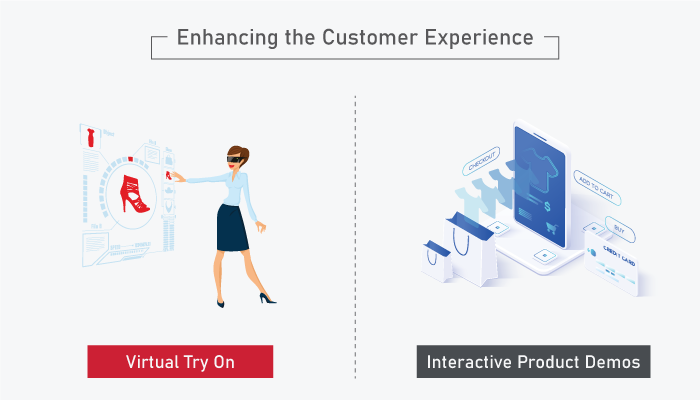
-
Virtual try on
AR in ecommerce has enhanced the customer experience by allowing customers to try on products virtually, such as clothing, accessories, or even makeup.
With an augmented reality ecommerce app, create a more engaging and informative shopping experience without having to physically try them on.
-
Interactive product demos
With the ar vr in ecommerce , product demos can also be used as a marketing & branding tool. It allows businesses to create unique and engaging experiences for their customers.
For example, high-tech gadgets could create an AR product demo that allows customers to see the inner working of the product and its functions.
Boosting Sales and reducing returns
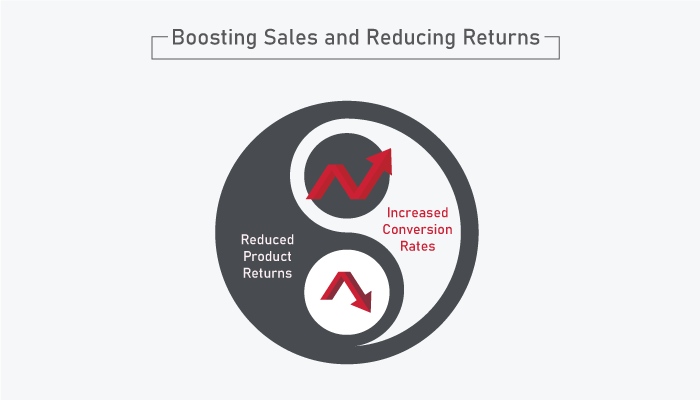
-
Increased conversion rates
Now, with AR solutions in ecommerce, it helps in increasing conversion rates by allowing customers to try on products virtually.
Additionally, this can lead to more confident purchase decisions and a higher likelihood of completing the sale.
-
Reduced product returns
This not only helps in reducing the number of returns but also helps customers to make informed purchase decisions. With try on customers can have a better idea of how the product will look and fit.
This will automatically reduce the number of returns due to incorrect sizing or not meeting customer expectations.
Providing valuable insights
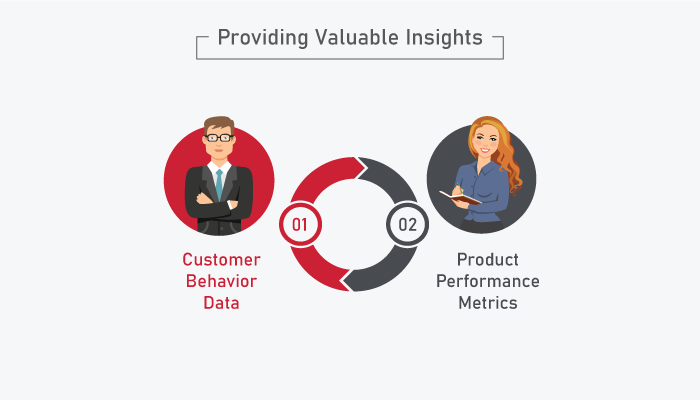
-
Customer behavior data
Augmented reality for ecommerce also provides valuable insights into customer behavior data and product performance metrics. This can help businesses make more informed decisions about their product offerings, marketing strategies, and customer experience.
-
Product performance metrics
AR in ecommerce gave product performance metrics, which can be valuable for e-commerce businesses. This data can be used to identify areas for improvement and optimize product offerings and marketing strategies.
AR use cases in ecommerce

-
Fashion and apparel
H&M, Gucci, CK, and many other known brands are providing users with an AR environment to choose outfits and accessories.
Most of us while shopping choose products that look good. Rather than thinking that it will look good on us. That’s when we wear things we get disappointed. That’s when AR saves us as users can try the product before purchasing it.
-
Virtual fitting rooms
GOAT, Ralph Lauren, and other renowned brands use virtual fitting rooms that allow customers to try on outfits from the comfort of their homes.
Ralph Lauren has installed virtual mirrors in the stores’ fitting rooms that gave them virtual try-on sessions.
Furniture and home décor
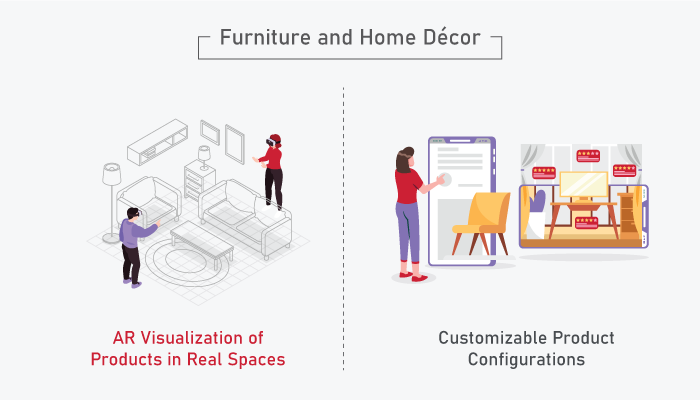
AR use cases in ecommerce
-
AR visualization of products in real spaces
This is the best AR technology. It can be used to visualize furniture and home décor products in real spaces, allowing customers to see how products would be in their homes.
-
Customizable product configurations
Now, before making any purchase in home décor, a user with e commerce augmented reality can check the product look and make suitable customization such as choosing different colors or materials.
Beauty and cosmetics
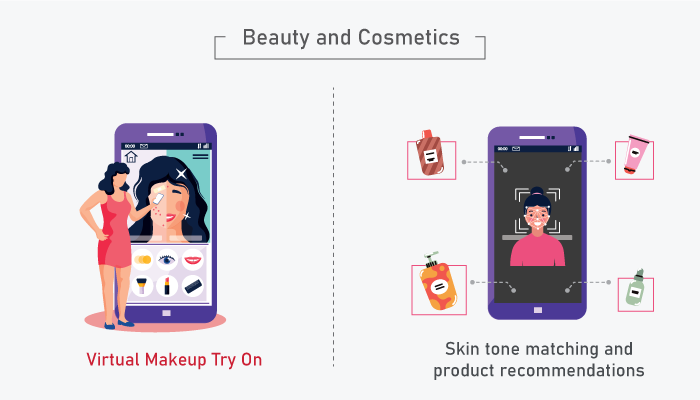
-
Virtual makeup try on
While e-commerce shopping, AR can be used to offer virtual makeup try-on. It allows customers to see how different products and shades would look on their skin.
-
Skin tone matching and product recommendations
With AR in ecommerce there is a buzz created in the beauty and cosmetics industry. It can also be used to offer skin tone matching and personalized product recommendations based on customer preferences.
AR in Ecommerce: Use cases
Augmented reality ecommerce tools have transformed ecommerce businesses. With these tools, customers not only explore but also evaluate and have a confident shopping experience.
You might be thinking, how many businesses are using AR tech?
Since there are a lot of use cases of augmented reality, here are some use cases in ecommerce:
Furniture

IKEA top furniture retailer that allows users to test its products through real-time ARkit technology.
This is the game changer technology, it just made it easier for customers to test look in real-time before purchasing. AR in ecommerce will transform the game of the retail industry like the internet.
Décor & Art
If you are an introvert and you are planning to redecorate your space. Don’t worry AR can save you time and energy.
Now, people are looking for new and exciting ways to collect and create art. Walls and panels can be built with a 3D slider. ESTY handmade giant has launched the AR feature in the art décor and art listing.

Fashion and Makeup
We have already discussed how AR is revolutionizing not only fashion but also the makeup industry.
Augmented reality e commerce examples like virtual try-ons for clothes to create virtual experiences for customers. For example, GAP has an AR app that allows customers to see how clothes will fit them before making a purchase.
Moreover, augmented reality fashion ecommerce tools like the virtual fitting rooms of H&M have created the buzz of AR in the ecommerce segment. On the other hand, makeup try-ons like Sephora have an AR app.
That allows customers to try different makeup products virtually before buying them.
Overall, AR in ecommerce has transformed the way customers shop for fashion and makeup by providing them with more interactive and immersive experiences.
AR is a game-changer for businesses. It allows companies to create immersive and engaging experiences that can help drive sales, build brand awareness, and connect with customers in new and meaningful ways.” – Satya Nadella, CEO of Microsoft
Future of AR in ecommerce
The future of AR in ecommerce looks promising and there is much exciting development on the horizon. As more and more customers will become aware with AR technology, you can see an increased in the adoption of AR in ecommerce.
Moreover, this will lead to more brands incorporating AR into their Apps and website which increased the demand for ecommerce app developers.
Social media platforms are already incorporating AR technology, and we can expect to see more collaboration between ecommerce brands and social media platforms.
However, there is a limited number of e-commerce platforms that offer AR technology integration like Shopify, Magento, and the Salesforce commerce cloud.
Final words
The future of AR in ecommerce is exciting and it will continue to see innovation and growth in this area in the coming years. The trend towards incorporating AR into online shopping experiences is growing and we can expect to see more platforms offering AR capabilities in the future.
It is recommended to start your Ecommerce App Development, by integrating augmented reality ASAP as the market is less competitive right now.
If you want to know more feel free to contact us.
FAQ
This technology can improve the customer shopping experience by providing more information about products, allowing customers to try on virtual versions of products, and creating interactive product demos.

Niketan Sharma is the CTO of Nimble AppGenie, a prominent website and mobile app development company in the USA that is delivering excellence with a commitment to boosting business growth & maximizing customer satisfaction. He is a highly motivated individual who helps SMEs and startups grow in this dynamic market with the latest technology and innovation.
Table of Contents




No Comments
Comments are closed.